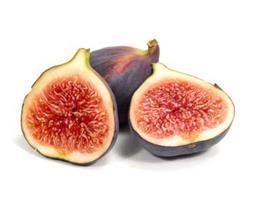
Overall tropical fruit sales stalled in the past year after a sustained period of growth, with retail volume sales slipping 0.7 per cent in the 52 weeks to March 2018, according to Kantar Worldpanel data (compare that to March 2017, which boasted a rise of 12.7 per cent).
The data firm blamed price inflation for the unexpected drop, which makes sense when considering their value for money has been a major factor behind their success. Items like mangoes, watermelons and pineapples pack far more fruit per pound than blueberries, for example.
Mangoes have dominated the category for several years, and their market share remains the largest. “The real tropical story here is mango’s performance over the last four years, which is now bigger in value than kiwifruit, and pineapple and has seen 47 per cent growth in the past four years,” says Per Hogberg, sales and marketing director of Wealmoor.
But after a flat year, it may be time to up their game with novel varieties required to reinvigorate the mango market. “Mangoes are now tailing off as we see retailers fighting for volume and debasing value through the increased promotional discounts. Just about everyone on the high street is promoting mangos and now you can get one for 49p, which is ridiculous. I think the key with mango is about bringing newness and new varieties.”
The standout category performer in last 12 months has been figs, which leaped 58 per cent in volume sales, according to Kantar. Despite a worldwide growing base, supply to the UK has been “bitty” according to Hogberg. But some will feel their rise, albeit from a low base, is an overdue recognition of their flavour and versatility (see page 18).
“Figs had a stellar performance, growing by 58 per cent in volume year or year and outperforming mango, pomegranates and other exotics,” says Hogberg. Key varieties Black Mission, Colar and Bursa from Turkey are becoming increasingly popular with occasions like Christmas, Eid and an increased Asian customer base helping drive sales.
The success of figs reflects a further consolidation of more exotic tropical fruits such as lychee, papaya, sharonfruit and pomegranate, which have buoyed the market.
“Much of the growth in value terms year on year has been driven by pomegranate and ‘fruit plus’, although off smaller bases, and we see more and more consumer engagement and experimentation particularly with pomegranate (in breakfasts, salads and more),” says Hugh Pile, chief sales and marketing officer at Blue Skies.
“We are excited by the growth of some less well known fruit, like papaya, that are developing a keen following among a more discerning audience. We expect to see this grow and flow more into the mainstream,” he adds.
Passionfruit performed well again with 11 per cent volume sales increase, but pineapples also made headlines when Tesco announced in March that it had become its fastest-selling fruit, soaring 15 per cent to overtake avocado sales.
Terry Watts, VidaFresh chief executive, says their excellent value plays a large role in their popularity. “Apart from the fact that a pineapple is a very versatile fruit, the MD2 variety delivers consumer satisfaction every time no matter the size or colouration. However, in my opinion the real driving force behind the growth in the demand for pineapples is that they offer amazing value for money. For example, an extra large pineapple in most supermarkets is currently about £1.50. Compare that to a pack of six apples at £1.60 - £2.60 or 500g of seedless grapes at £2, and you can see the obvious difference in value.”



